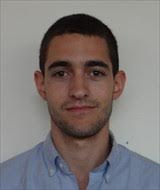4 Jewish takeaways from the new L.A. city council map

City council district map. Image by Louis Keene
The Los Angeles City Council approved a new district map on Tuesday, finalizing the contours of the city’s 15 council districts for the next decade.
The unanimous vote belied a contentious redistricting process that drew thousands of comments. Public meetings often lasted longer than six hours.
At one point early in the process, a Los Angeles synagogue sent an email to congregants asking for them to recite tehillim (Psalms) to ensure a favorable map. Others encouraged their members to issue public comment, and many did.
Here are five Jewish takeaways from the final map, which is viewable here.
(The 2010-2020 map that will be retired Jan. 1 can be viewed here.)
1. The Fifth District that represents much of the Westside lost one Jewish neighborhood but gained one (and a half).
Most of the city’s Orthodox institutions are now in the same district.
District 5, which is currently represented by Paul Koretz, has long included the Orthodox stronghold of Pico-Robertson, some of the Fairfax-La Brea area and — via a Bel Air-sized tentacle connecting the district to the San Fernando Valley — Encino. The district did not, however, include Shalhevet High School or the Los Angeles Museum of the Holocaust, or most of the Miracle Mile neighborhood they sit in.
The final map moves Encino to the fourth district and adds the rest of Miracle Mile and the Fairfax-La Brea area from District 4 to Koretz’s district. That includes Shalhevet and the Holocaust museum, as well as the Park La Brea residential complex (and the new kosher fried chicken place).
Moreover, about half of Hancock Park, the Jewish neighborhood that includes Yavneh Hebrew Academy, has been added to the district in this new map. Encino, meanwhile, home of the largest synagogue in the Valley, Valley Beth Shalom, has been lopped off the top of District 5 and moved to District 4.
Koretz will be termed out in 2022, and a pair of candidates with strong Jewish connections, Sam Yebri and Katy Yaroslavsky, are vying to replace him.
Get the Forward delivered to your inbox. Sign up here to receive our essential morning briefing of American Jewish news and conversation, the afternoon’s top headlines and best reads, and a weekly letter from our editor-in-chief.
2. The potential Jewish superdistrict in the Valley didn’t come to be in District 3…
When we last checked in on redistricting, the map with the most support gathered most of the Valley’s biggest Jewish neighborhoods — North Hollywood, Tarzana, Encino, Sherman Oaks and Valley Village — into Council District 3. (See Page 11 of this PDF for detail.)
Instead, that district, represented by Bob Blumenfield, saw arguably the least amount of change. District 3 continues to include Reseda, Canoga Park and Woodland Hills.
3. …but it looks like the Fourth District might have the Valley’s Jewish superdistrict instead.
Most of the controversy surrounding the redistricting process involved District 4 and its representative, Nithya Raman, who toppled an incumbent with a record number of votes only to see the district that elected her torn asunder by the Commission.
The final map will not assuage Raman’s supporters — according to the councilmember, it will cost her about 40% of her constituents. Yet the new District 4 will include Encino, Sherman Oaks and Studio City — not quite a Jewish superdistrict, but certainly gathering a few key Jewish neighborhoods into the same seat.
4. Jewish areas in the city are growing faster than the districts that contain them.
Once the Redistricting Commission gets past making sure each district has roughly the same number of people in it (about 270,000, this time around), one of the central principles of the process is keeping communities of interest together. That principle partly informed the drastic changes to District 5.
But anecdotally at least, Jewish residents are already spilling over Koretz’s new district boundaries into the Pico-Fairfax area — which remains District 10 territory in the new map. It’s hard to imagine that by 2030 they won’t have filled in even more, pushed there by sky-high housing prices in Pico-Robertson and pulled there by new synagogues that have been popping up east of Robertson Blvd. in the last few years.
If the 2020 census ultimately added Miracle Mile to District 5, it’s possible that 2030’s redistricting will bring in Picfair Village and more of Mid-Wilshire. And, perhaps, the remainder of Hancock Park.
















